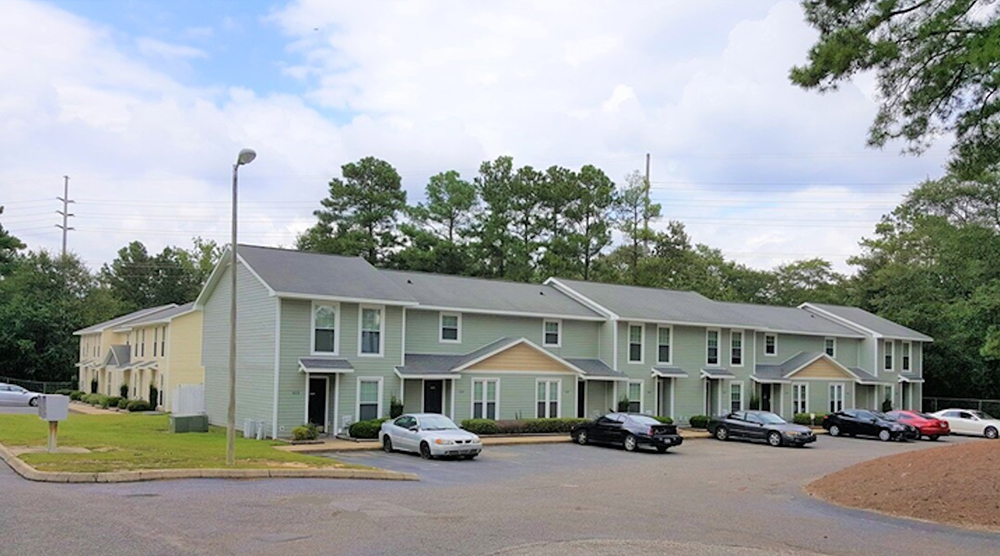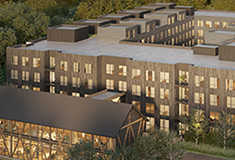News: Financial Digest
Posted: October 10, 2007
Appraising environmentally impacted properties
Appraising properties that have suffered environmental contamination can offer significant challenges to an appraiser.
Environmental contamination can adversely impact a property's value. This impact can continue even after the problem has been remediated. A property may also suffer losses if it is suspected that it may or could eventually be contaminated.
The first step is for the appraiser to identify the appraisal assignment. Is the property being appraised under a hypothetical assumption that it is not impacted? If this is the case the appraiser must use great care to make the reader aware of the contamination and of the hypothetical nature of the assignment.
If the impaired or "market" value of the property is the objective the appraiser must be aware of the type and extent of the contamination and properly understand the effects of contamination on value.
There are three potential effects of contamination that can impact the market value of real estate: "cost effects or expenses required to remediate a contaminated property to appropriate regulatory standards; use effects, are losses associated with limitations on the highest and best use of the subject property due to environmental contamination and its remediation; and risk effects, are the effects on value due to the market's perception of increased environmental risk and uncertainty."
The appraiser should never estimate the costs associated with remediation of the problem. The client should provide an estimate, preferably more than one, from a qualified remediation firm. Since, as with an appraisal, it is doubtful that two firms will agree on the costs of remediation the appraiser, in conjunction with the client, will have to make a decision about the costs. The appraiser must exercise due diligence in reviewing these technical reports.
Next the appraiser must consider highest and best use. If there has there been a change in the highest and best use of the subject as a result of the contamination the appraiser must measure any loss in value as a result of this change. This does not have to be a total change in use. For example it could be a lot were the highest and best use is division into two residential building lots. As a result of the contamination no more than one house can be built on the entire parcel. The loss would be any difference in value of the land.
Risk is loss that results when buyers hold the perception that some adverse event could occur in the future as a result of the contamination that has been identified. The owner of record is responsible for remediation of any environmental problems associated with a site even if they were not responsible for the cause of the problem.
Risk is also known as stigma. Stigma is defined by The Dictionary of Real Estate Appraisal as: "An adverse public perception regarding a property; the identification of a property with some type of opprobrium (environmental contamination, a grisly crime), which exacts a penalty on the marketability of the property and hence its value."
According to The Appraisal Foundation, Advisory Opinion 9, "the analysis of the effects of increased environmental risk and uncertainty on property value (environmental stigma) must be based on market data, rather than unsupported opinion or judgment."
The first two effects are relatively straight forward and easy to measure. The measurement of risk is more difficult. Risk is a perception that is not necessarily the same with all buyers. The perception of risk can vary greatly depending on the type of contamination (fuel oil, chemical, mold, or gases ect.), location (distance from the subject, location in or on the subject), and extent of the contamination.
Part two will appear in the November XX edition of the New Englans Real Estate journal
Steven Spangle, SRA, MRA, is president of Spangle Associates, Auburn, Mass.
The perceived risk is greatest when the contamination has been discovered but not remediated. The perception of risk tends to decrease as the property gets farther from the completion of all required remediation.
The perception of risk can differ depending on whether the subject is a source (contamination generator), non-source (contamination migrated to site from another source), adjacent (uncontaminated property abutting a contaminated site), or a proximate site (uncontaminated property that is in close proximity to a source site).
THIS WOULD APPEAR TO BE A GOOD POINT TO DIVIDE AT
There are several methods, which represent acceptable appraisal methodology, which can be used to measure stigma.
Income Approach recognizes that one component of a capitalization rate is risk. As the perception of risk increases both the net income and the capitalization rate may change. This may indicate a penalty for risk. This penalty must be measured from the market. It is also may be evident in the Gross Rent Multiplier of smaller residential income properties. Care must be taken not to penalize a property twice. A loss of income may result from a change in use caused by the environmental problem rather than from risk.
Regression analysis is a method of displaying multiple transactions on a grid to visually display a relationship. The basis is this method is a control property against which other data can be compared. This can be a very good method when there is good conformity of property types allowing for statistical comparison. In New England property conformity in a neighborhood is often limited making this a difficult method to use.
The Sales Comparison Approach is a comparison method of supporting adjustments. It compares two generally similar properties to isolate a single difference and thus draw conclusions about the impact of that item. A property that had an environmental issue that was remediated is compared to a similar property that had not been impacted. And difference that exists after all other adjustments have been made can reasonably be attributed to risk (stigma). When using this approach, as in the other methods, the appraiser must be aware of the many influences on risk. As the time period from the completion of remediation to a sale increases the risk (stigma) tends to decrease. Differences in types and locations of environmental issues will impact the amount of risk. It would not be proper to develop support for a risk adjustment in a property impacted by mold and apply that same adjustment to a property that had an oil release from an underground tank in the yard.
Surveys are intended to elicit reasonable responses from individual that then allow for the drawing of conclusions. This method is dependant on the questions asked and how representative the population surveyed is. In order to be meaningful the questions should be designed by a qualified expert in this field. An expert should also establish what constitutes a truly meaningful test group. While this method can provide interesting information is prone to significant error is experts are not used. It is best used as support for one of the other methods.
This article provides an overview of the issues involved in appraising environmentally impacted properties. There have been excellent articles written as well as texts that go into much greater detail regarding the techniques and methodology mentioned in this article. The Appraisal Institutes Lum Library is an excellent resource for appraisers.
An appraiser taking on an assignment involving an environmentally impacted property has an obligation to be competent. Competence means knowing, understanding and correctly employing the appropriate techniques and methodology necessary to complete the assignment in a competent manner.
Tags:
Financial Digest
MORE FROM Financial Digest
Preservation of Affordable Housing secures $23.5 million in financing from Rockland Trust and Citizens Bank
Cambridge, MA The nonprofit Preservation of Affordable Housing (POAH) has secured $23.5 million in financing from Rockland Trust and Citizens Bank to transform a 150-year-old, underutilized church complex into housing. The project will ultimately create 46 affordable family-sized apartments.

Columns and Thought Leadership

Conn. hospitality market: A technical appraisal perspective on market dynamics and valuation challenges (2019-2025)
The Connecticut hospitality market has demonstrated uneven recovery patterns between 2019 and 2025, with boutique and historic properties achieving $125 RevPAR in 2025, up 8.7% from the 2019 level. Coastal resort properties achieved a $105 RevPAR in 2025, representing 10.5% growth since 2019. Casino corridor properties maintained modest growth with RevPAR improving 4.5% to $92 in 2025.

Examples of investors who used Kay Properties for legacy and estate planning purposes for rental property/portfolios - by Dwight Kay
Preserving wealth across multiple generations requires strategic planning, foresight, and the right investment vehicles. Delaware Statutory Trusts (DSTs) offer a powerful solution for families looking to build and protect their financial legacy and to efficiently plan for their estate.








